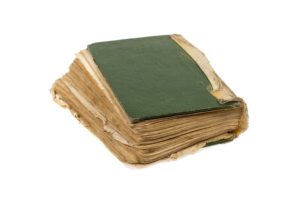The last six months have perhaps ushered in more changes in the charitable gift planning world than any other period in the past 30 years.
Given these developments, gift planners need to review the online and print materials they rely on to educate and motivate donors to make sure they are still effective in today’s environment.
What has happened?
Since December of 2017 we have seen dramatic changes in federal income tax laws; the elimination of the federal estate tax for 99.9% of Americans; rising interest rates that have a major impact on the size of charitable deductions for certain types of charitable trusts and gift annuities; and new recommended gift annuity rates that are higher for almost all ages. In addition, the stock market has reached record heights and real estate markets have recovered or exceeded pre-recession levels in much of the country. In short, the charitable giving landscape has changed
dramatically, and it is vital that communication materials be updated to reflect these changes.
Gift planners need to understand the urgency of this task. It is not just a matter of changing a few tax rates and other details in examples. The scope of the changes that have occurred demand different underlying strategic themes. Updated materials should focus on different types of property and timing considerations and should acknowledge and dovetail with major changes in noncharitable tax and financial planning strategies. Income tax planning is rapidly replacing estate tax concerns when a donor is considering how to best structure his or her estate plans. For example, a previously planned bequest that is not expected to result in estate tax savings and that will leave a donor exposed to asset attrition may no longer be the best gift planning solution. A better approach may now be a charitable gift annuity (CGA) or charitable remainder trust (CRT) that features immediate income and capital gains tax savings rather than no tax benefits at death for most donors.
Another benefit of accelerating a bequest through a CGA, CRT or other split interest gifts may be the restoration of itemizer status for the donor by virtue of the sizeable charitable deductions these plans can generate. Those deductions may in themselves be sufficient to clear the new higher standard deduction hurdles and allow donors to itemize other deductible expenditures. The concepts are included in a number of revised Sharpe booklets.
A new gift king
When it comes to outright charitable gifts, cash may no longer be king. For donors who don’t expect to itemize their charitable gifts, securities and other properties that have increased in value may be a much better choice to fund both current and deferred gifts. That’s because the donor will not normally owe state and federal capital gains of 30% or more, in some cases, when appreciated assets are donated, whether or not the donor itemizes their deductions. The donor can then find other uses for the cash that may have previously been earmarked for the charitable gift because no income needs to be taxed in order to make the donation. Do your current materials illustrate that fact?
Multi-channel approach needed
Gift planners may also need to rethink how they deliver their messages. Authoritative “brain science” is now revealing Baby Boomers and others who are not “digital natives” respond best to a mix of media. Scientific studies show those beyond their mid-40s are firmly and irrevocably programmed to mentally accept information, other than advertising, in a print format on paper, preferably utilizing the serif typefaces that Boomers are familiar with from their educational experiences earlier in life. (See “Think Print Is Dead? Think Again,” Give & Take, November 2015, featuring studies published in Scientific American in 2013.)
This does not mean, however, that nonprofits should just send print postcards or newsletters with bullet points and expect information on the website to do the “heavy lifting.” That will not work for most donors in their 60s and beyond. Many, if not most, in that age group will need to receive detailed information in print format. Organizations that are successful in charitable gift planning already know this. It’s not too late for others to return to proven communication techniques while we await the maturity of a younger generation of digital natives.
Getting down and direct
In the busy world of ceaseless images and sounds assaulting your donors’ senses, it may be more effective to take the time to not only do mass marketing through newsletters, eblasts and other means, but also carefully target the people you really want to reach and not sit around like the proverbial Maytag repairperson waiting for them to ask for it.
Response rates to all forms of “planned gift marketing” are spotty at best. Planned gift “lead development” through print and email may be oversaturated and past its prime experienced in the 1990s and early 2000s.
Gift planners need to adjust their approach in response. For example, instead of sending 10,000 newsletters on property gifts and hoping 0.2% (20 people) will return a card or go to your website, why not cut the newsletter mailing to 9,000 and send 1,000 detailed booklets to the group that analysis reveals are most likely to make a gift of securities or other property? Which approach do you suspect will result in more gifts?
In reality, you need to do it all—mass and targeted approaches—but in a well-planned way and with updated materials. Optimizing your marketing may cause more donors to act. The goal should be to produce quality activity, not simply quantity.
Sharpe and Newkirk booklets and brochures have all been carefully rewritten to help you communicate the multi-faceted changes in our tax and economic landscape and, in so doing, encourage and complete more gifts.
Now is the time to build a new gift planning “library” or make sure your tools are up to date. Click here for more details. ■


